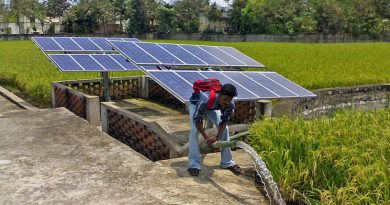Photovoltaic Cells vs Solar Panels: Unveiling the Differences
Photovoltaic cells and solar panels are often used interchangeably in conversations about solar energy. However, are they really the same thing? In this blog, we will explore the similarities, differences, and the relationship between photovoltaic cells and solar panels to gain a deeper understanding of these two essential components of solar power systems.
Table of Contents
Understanding Photovoltaic Cells
Photovoltaic cells are the primary building blocks of solar panels. These cells, also known as solar cells, are responsible for converting sunlight directly into electricity through the photovoltaic effect. The photovoltaic effect occurs when photons from the sun’s rays strike a semiconductor material within the photovoltaic cell, causing the release of electrons and the creation of an electric current.
Components and Functionality
Photovoltaic cells are composed of semiconductor materials, typically made from silicon. The most commonly used type of solar cell is the crystalline silicon cell, which accounts for a significant portion of solar panels installed worldwide. These cells feature a positively charged top layer and a negatively charged bottom layer, creating an electric field within the cell.
When sunlight hits the photovoltaic cell, the photons’ energy is absorbed by the silicon atoms in the cell’s semiconductor material. This energy causes electrons to be freed from their atomic bonds, creating a flow of electrons within the cell. This flow is captured by an electric conductor within the cell, generating direct current (DC) electricity.
Structure and Appearance
Individual photovoltaic cells are typically small, measuring around 6 inches square on average. To harness the optimal amount of sunlight, several cells are connected and encapsulated within a protective and weather-resistant structure, forming what is commonly referred to as a solar panel. Solar panels come in various shapes and sizes, making them adaptable to different applications and environments.
The Relationship Between Photovoltaic Cells and Solar Panels
Solar panels consist of multiple photovoltaic cells wired in series or parallel to form modules, which can then be combined to create larger arrays. These arrays generate higher amounts of electrical power, making them suitable for residential, commercial, and utility-scale solar installations.
Solar panels serve as the platform for photovoltaic cells, providing structural support, protection, and electrical connection. Multiple solar panels are often mounted on rooftops or open fields to maximize exposure to sunlight and increase overall energy generation. The modular nature of solar panels allows for scalability depending on the power output desired.
Are Photovoltaic Cells and Solar Panels the Same?
While photovoltaic cells and solar panels are closely related, they are not the same. A photovoltaic cell refers to a single unit that directly converts sunlight into electricity. On the other hand, solar panels consist of multiple connected photovoltaic cells, operating together to harness the sun’s energy and generate electricity on a larger scale.
Applications and Benefits
Photovoltaic cells and solar panels have numerous applications and advantages. They are widely used in renewable energy systems to generate electricity for various purposes, including residential, commercial, and industrial applications. Solar power entails several benefits, such as reducing greenhouse gas emissions, decreasing dependence on fossil fuels, and lowering electricity bills in the long run.
Additionally, the installation of solar panels and photovoltaic cells is relatively straightforward, making them suitable for both remote and urban environments. As technology advances, solar panels become more efficient and affordable, contributing to their increasing popularity as a clean and sustainable energy source.
Conclusion
In conclusion, Optimize your solar solutions with SolarClue® as we unveil the differences between photovoltaic cells and solar panels. Photovoltaic cells generate electricity independently but are often combined into solar panels for efficient energy production. SolarClue® guides homeowners through the decision-making process, considering factors like energy needs and budget constraints. In residential solar energy systems, interconnected solar panels, composed of photovoltaic cells, capture sunlight to power homes. While photovoltaic cells can be standalone, solar panels simplify installation and integration. SolarClue® leverages expertise to help homeowners choose the most suitable solution, factoring in advancements and technologies for optimal efficiency. Contact us for personalized consultations and elevate your solar journey.
Frequently Asked Questions
Photovoltaic (PV) cells are individual units that convert sunlight into electricity, whereas solar panels, also known as solar modules, consist of multiple connected PV cells working together to generate electricity.
Photovoltaic cells, when exposed to sunlight, generate direct current (DC) electricity through the photovoltaic effect, which is then converted into usable alternating current (AC) electricity for homes and businesses.
The combination of PV cells into a solar panel increases the overall power output, allowing for more efficient energy generation and utilization.
While photovoltaic cells can generate electricity independently, they are often interconnected to form solar panels for practical applications in residential, commercial, and industrial settings.
In residential systems, multiple solar panels, composed of interconnected photovoltaic cells, are installed on rooftops or ground-mounted structures to capture sunlight and generate electricity for the home.
Using photovoltaic cells directly is less common due to their lower efficiency and limited power output compared to solar panels, which are designed for practical energy production.
Photovoltaic cells require intricate wiring and connections to create a functional solar panel. Solar panels, being pre-assembled units, simplify installation and integration into larger solar energy systems.
Absolutely, SolarClue® provides expert consultations to help homeowners assess their energy requirements and determine whether photovoltaic cells or solar panels are the more viable solution.
Ongoing technological advancements, such as improved materials and manufacturing techniques, contribute to enhancing the efficiency of both photovoltaic cells and solar panels.
SolarClue® assists homeowners in making informed decisions by considering factors like space availability, energy needs, and budget constraints to determine the optimal configuration of photovoltaic cells and solar panels for their specific requirements.



